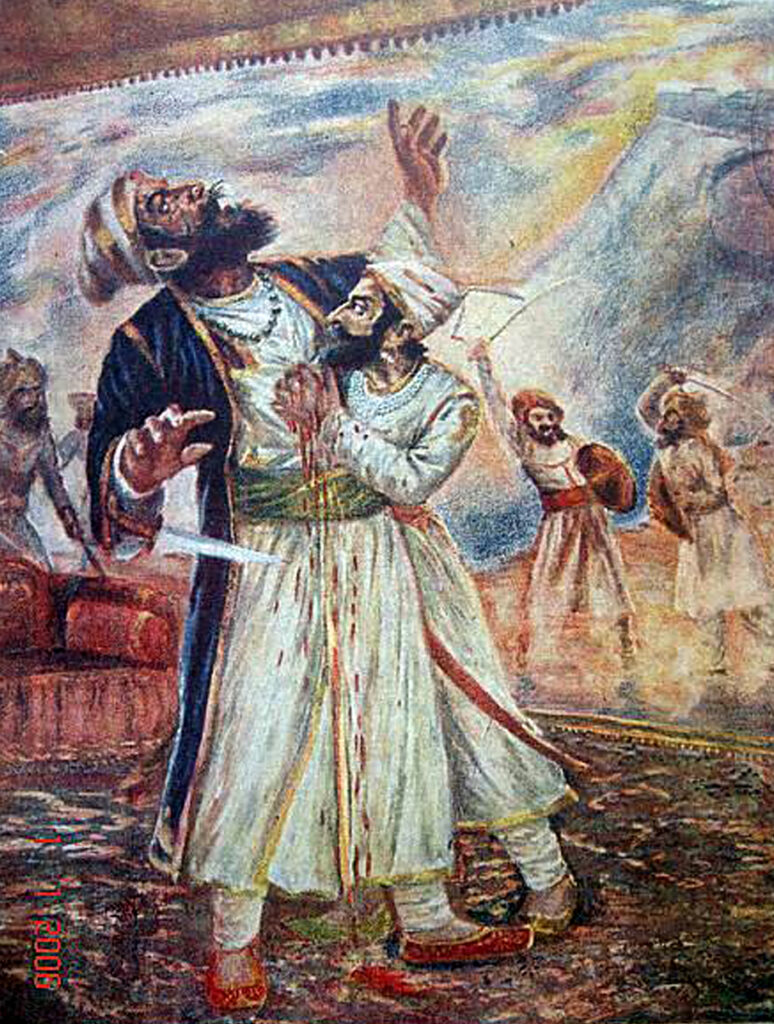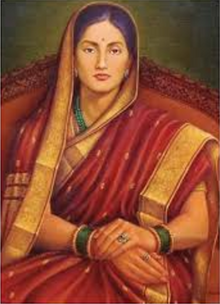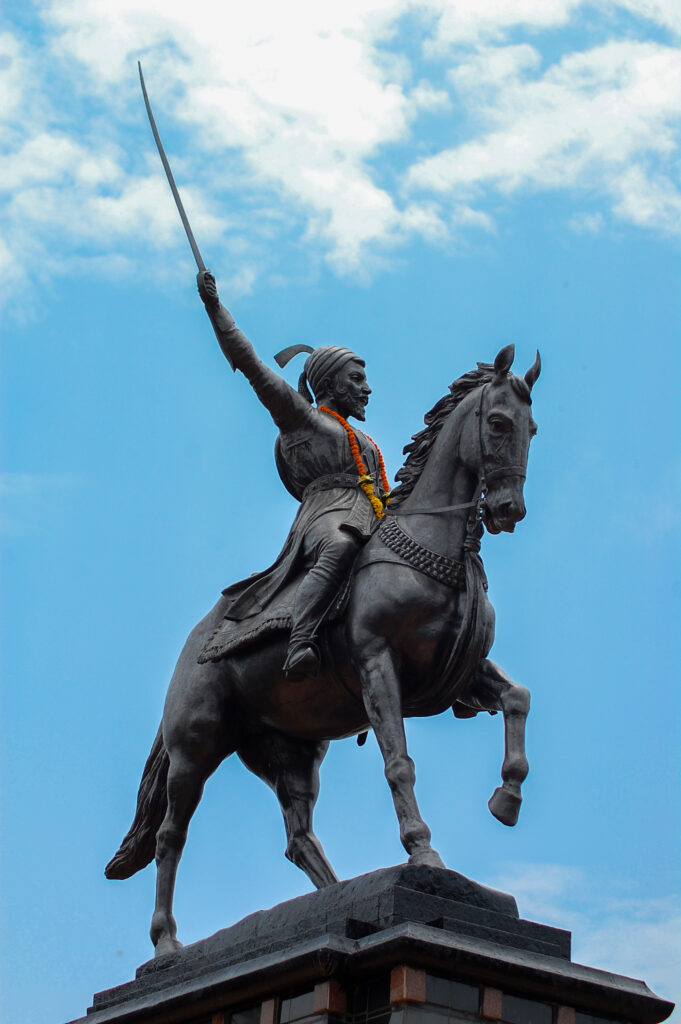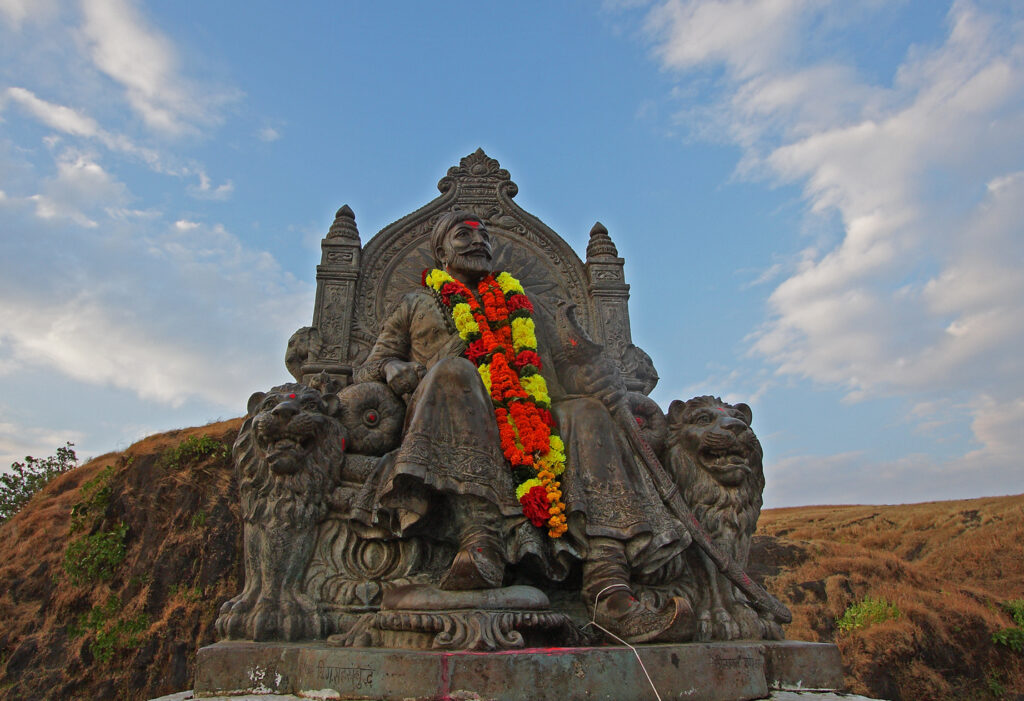Shivaji Bhonsale, known as Shivaji Maharaj, was a renowned Maratha warrior king and founder of the Maratha Empire. During his reign in the 17th century, he established a formidable kingdom in Western India, challenging the dominance of the Mughal Empire.
The Maratha Empire, under Shivaji’s leadership, became a significant power in the region. The Maratha warriors, known for their guerrilla warfare tactics and unwavering spirit, played a crucial role in resisting foreign invasions and maintaining regional autonomy.

Preparations for the Coronation
The coronation of Shivaji Maharaj was a meticulously planned and elaborate affair. Preparations began well in advance to ensure a grand and ceremonial event befitting the momentous occasion.
One of the critical aspects of the preparations was selecting an auspicious date and venue. Astrologers were consulted to determine the most favorable day for the coronation based on planetary positions and celestial omens.
The venue chosen for the coronation was Raigad Fort, the impregnable stronghold of the Maratha Empire. The fort perched atop a lofty hill offered a panoramic view of the surrounding landscape and symbolized Shivaji Maharaj’s power and authority.
Grand preparations were made to accommodate the numerous dignitaries, nobles, and representatives from allied kingdoms who would attend the coronation. Envoys were dispatched to invite prominent figures from across the country, including Rajput princes, Mughal officials, and representatives from coastal trading communities.
The preparations also involved the creation of elaborate ceremonial attire, including the royal robes and crown to be worn by Shivaji Maharaj during the coronation. Artisans were commissioned to craft these symbols of sovereignty, ensuring they were adorned with exquisite craftsmanship and precious jewels.
Invitation to Notable Figures
Shivaji Maharaj extended invitations to prominent individuals from all walks of life, including Maratha sardars, Rajput princes, Muslim chieftains, and religious leaders, to grace the occasion. These invitations were not merely formal gestures but were intended to foster unity and demonstrate Shivaji’s commitment to a composite culture. The invitees included:
- Firangoji Narsala, a prominent Maratha sardar
- Netaji Palkar, another renowned Maratha commander
- Raja Jai Singh of Amber, a Rajput prince
- Adilshah II, the Sultan of Bijapur
- Qazi Haider, the Qazi of Junnar
- Samoji, a respected Brahmin priest
The Auspicious Coronation Date and Venue, 6 June 1674 at Raigad Fort
The selection of the auspicious date and venue for Shivaji Maharaj’s coronation was guided by both astrological and strategic considerations. Astrologers carefully calculated the most favourable time and place based on celestial alignments and planetary positions. The venue chosen was the imposing Raigad Fort, a strategic location overlooking the Sahyadri Mountains. Its natural fortifications and central position made it an ideal site for the coronation ceremony and the subsequent establishment of the Maratha Empire.
Shivaji Maharaj’s rajyabhishek ceremony was conducted on 6 June 1674.
Elaborate Ceremony and Rituals
The coronation ceremony of Shivaji Maharaj was a grand and elaborate event, meticulously planned and executed to reflect the significance and grandeur of the occasion. The rituals and ceremonies were rooted in ancient Hindu traditions, infused with elements of Maratha customs and practices. Here are some key highlights:
1. Vedic Chants and Blessings:
Vedic hymns and mantras were recited throughout the ceremony by renowned priests, invoking divine blessings upon Shivaji Maharaj and the Maratha Empire.
2. Abhisheka (Anointment):
Shivaji Maharaj was anointed with sacred waters from seven holy rivers, signifying purification, strength, and divine favor.
3. Offering of Gold Coins:
Noblemen and representatives from various regions showered Shivaji Maharaj with gold coins, symbolizing wealth, prosperity, and the support of the populace.
4. Presentation of the Royal Insignia:
Shivaji Maharaj was presented with the royal insignia, including the sword, scepter, crown, and robe, representing his authority and sovereignty.
5. Pledge of Allegiance:
Feudal lords and military commanders pledged their allegiance and loyalty to Shivaji Maharaj, acknowledging him as their supreme commander and ruler.
6. Social and Cultural Festivities:
The coronation ceremony was accompanied by a range of celebratory events, including feasts, music, dance performances, and traditional games, reflecting the joy and unity among the populace.
Spiritual and Religious Significance of the Coronation
The coronation of Shivaji Maharaj was not merely a political event but held profound spiritual and religious significance. It was seen as a divine mandate, a sacrament that bestowed upon Shivaji the authority to rule as the protector and upholder of dharma, or righteousness.
The coronation ceremony was infused with Hindu rituals and traditions. Shivaji sought the blessings of his guru, Samarth Ramdas, and invoked the presence of various deities, including Shiva and Bhavani, the patron goddess of the Marathas. By performing these rituals, Shivaji aimed to establish his rule as one based on divine sanction and legitimacy.
The coronation also marked the establishment of the Maratha Empire as a sovereign and independent state. It signaled the emergence of a new political order in India, one that was not subservient to the Mughal Empire or any other external power. Shivaji’s coronation thus became a symbol of Maratha pride and self-determination, inspiring generations to come.
Consequences and Significance of the Coronation
Shivaji Maharaj’s coronation as Chhatrapati marked a pivotal turning point in Maratha history. It formalized his status as the supreme ruler of the Maratha Empire and bestowed upon him the authority to establish an independent state. The coronation solidified the Maratha Empire’s position as a formidable force in the Deccan region and beyond.
The coronation also had a profound impact on the Maratha people. It fostered a sense of unity and pride among the Marathas, who had long been subjected to the rule of external powers. Shivaji Maharaj’s coronation inspired Maratha generals to expand the empire’s territories and establish a strong and independent Maratha kingdom.
Furthermore, the coronation had far-reaching consequences for the political landscape of the subcontinent. It challenged the dominance of the Mughal Empire, which had hitherto held sway over much of India. Shivaji Maharaj’s coronation signaled the emergence of a new power in the Deccan and set the stage for future conflicts between the Marathas and the Mughals.
Shivaji Maharaj’s Reign and Legacy
Shivaji Maharaj’s coronation marked the beginning of his reign as the first Chhatrapati of the Maratha Empire. His rule was characterized by military prowess, strategic alliances, and administrative reforms.
Shivaji Maharaj established guerilla warfare tactics and strengthened the Maratha navy, expanding his territories and consolidating his power. He implemented a just and effective administrative system, promoting education, trade, and agriculture.
Shivaji Maharaj’s legacy extended beyond his lifetime. His vision of a sovereign and independent Maratha Empire inspired generations to come. His principles of self-reliance, valor, and strategic thinking continue to be admired and studied today.
Commemoration and Celebration of the Coronation
Shivaji Maharaj’s coronation ceremony holds significant cultural and historical importance in Maharashtra and India. Over the centuries, the event has been commemorated through folklores, songs, and literary works. In modern times, the coronation anniversary is celebrated as a state holiday in Maharashtra, known as Shivrajyabhishek Din. On this day, cultural programs, parades, and commemorative events are organized to honor the legacy of Shivaji Maharaj and his contributions to the Maratha Empire.
The coronation ceremony, with its elaborate rituals and grandiosity, continues to inspire artists, historians, and cultural enthusiasts. It serves as a reminder of the rich heritage and indomitable spirit of the Maratha Empire, and continues to be a source of pride and cultural identity for the people of Maharashtra.
Before You Go:
The coronation of Shivaji Maharaj was a milestone achievement building on his many successes. Learn more about them here:














